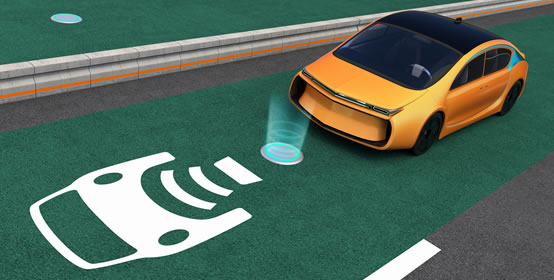
Vehicles of the future will most likely be electric, wirelessly charged and automated. In the past several months, researchers have discovered an efficient way to charge EVs while they are in motion. These concepts are inching closer to being applicable in the real-world. Some areas have already tested and implemented the technology. The future of driving could be drastically different than what we are experiencing today.
Top researchers at Stanford University recently published their findings on wireless power transfer research in a widely received article in Nature, an international weekly journal of science news. The development of wireless power technology involves using the magnetic-field to transfer power, but our current understandings have limited the tech to stationary objects. Both the receiving and sending coils must be tuned to the same frequency, positioned at very specific angles and require constant manual tuning.
Shanhui Fan, Xiafang Yu and Sid Assawaworrarit, however, have discovered that incorporating a nonlinear parity-time-symmetric circuit enables a robust wireless power transfer to moving devices and vehicles. They successfully tested this by removing the radio-frequency source in the transmitter and instead replacing it with both a feedback resistor and amplifier. Transmissions and power transfer were stable without the need for continuous manual tuning.
Tesla has been a driving force in the production and distribution of electric vehicles. The company has heavily invested in a giant network of Supercharger stations around the globe that can charge vehicles in an hour or less. Tesla has introduced a wireless electric vehicle charging accessory that was independently developed by Evatran. Evatran has been working to develop such charging capabilities since early 2011, and EV drivers have already charged their cars for over 900,000 hours using their plug-less methods.
Ford has also joined the EV race, and hopes to become competitive with Tesla. The company has developed a FordPass app program that allows EV drivers to book special wireless charging parking spots. Ford is exploring the possibility of developing roadways that allow wireless charging.
Shanhui Fan, one of the co-authors of the well-regarded Nature article, explains that “the hope is that you’ll be able to charge your electric car while you’re driving down the highway.” In Versailles, France Qualcomm Halo demonstrated the effectiveness of charging cars wirelessly, while in motion, using roadways lined with inductive charges. The company seeks to combine and reinforce the technologies behind electric vehicles and autonomous ones.
Steve Pazol, Qualcomm’s vice president, explains “autonomous vehicles can’t plug themselves in, so what will happen?” Many transportation experts, climate change advocates and techies envision a future automated highway system that limits the need for human drivers and chargers. Such a system, proponents argue, will reduce accidents, save lives and reduce greenhouse gas emissions.
Many advocates argue that EV cars and automated technology is the only socially and environmentally conscious choice. Burak Ozpineci, a group leader at the National Transportation Research Center, argues that “in a few years, drivers of traditional cars will be viewed by society in the same way as smokers.”
In South Korea, the Korea Advanced Institute of Science and Technology have already developed and switched on roadways that can electrically charge cars back in 2013. Their public busses successfully utilize the wireless charging technology. The U.K. is also attempting to get the wireless tech in operation. They have currently installed over 30,000 charging stations across Europe, and Highways England has commissioned a study researching the installation of these highways. Similarly, plans are in development to integrate a wirelessly charging highway around the Beijing International Airport.
The notion of vehicle enthusiasts, techies and environment advocates that the future of driving is most likely electric, wireless and automated is inching closer to becoming a reality. Several companies are competing to perfect the technology, countries are funding research studies and select areas are demonstrating the potential of wireless power transfer for vehicles. It’s highly likely that this technology will hit the United States within the next decade.